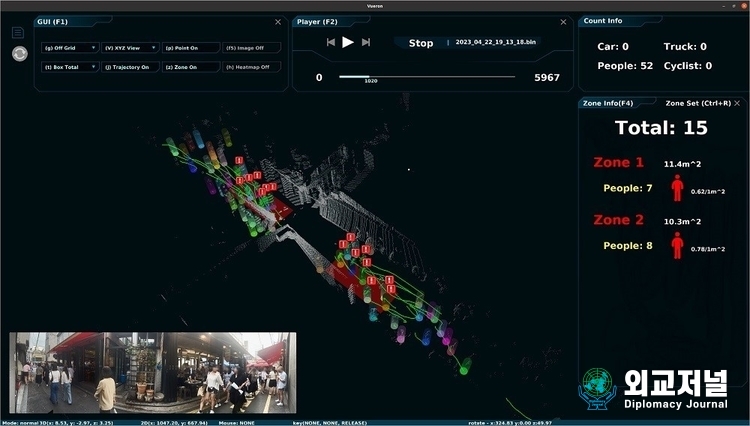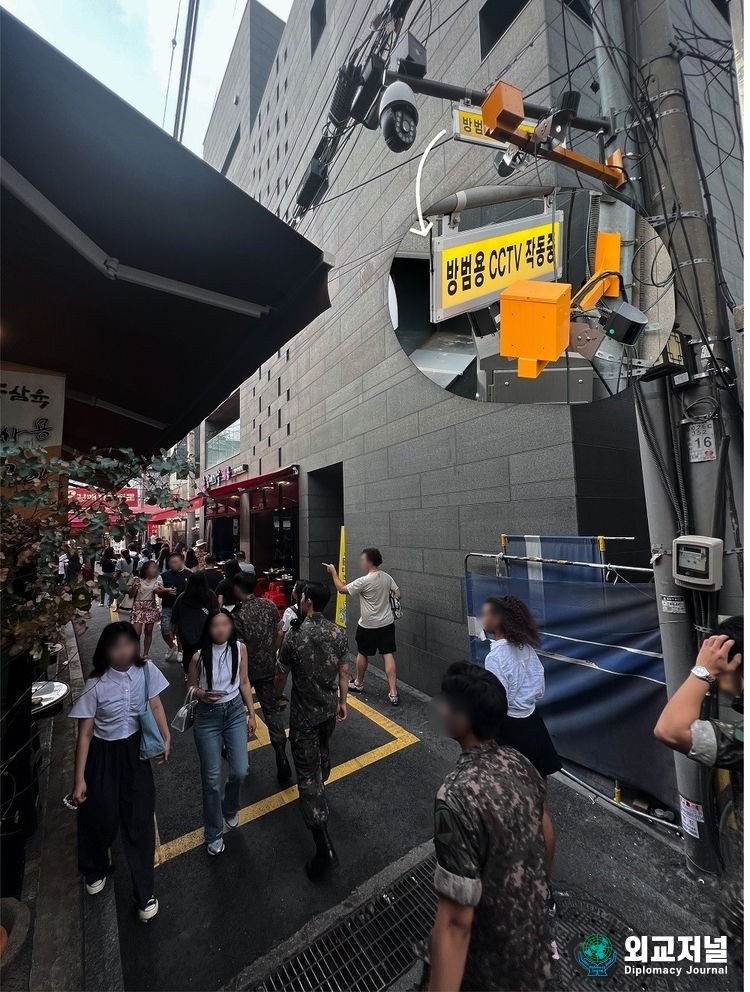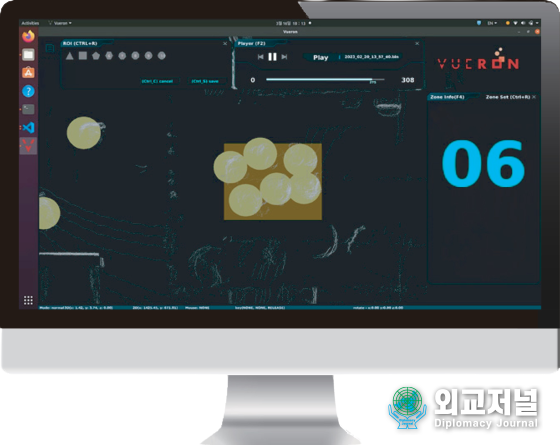By Lee Kap-soo
Vueron Technology, a leading LiDAR perception solution provider, said that Seoul City introduced the Vueron Technology-developed LiDAR-based Smart Crowd Analytics (SCA) for the first time in the world.
SCA identifies the flow of people in densely populated areas and analyzes congestion to prevent accidents in advance. Through accurate detection, operators can make real-time decisions by specific numerical data and citizens can also make informed choices.

In this regard, Seoul City was selected as the No.1 city at the SCEWC Barcelona Smart City Expo last year, showcasing an exemplary case that solidifies its position as a state-of-the-art example in the realm of smart cities worldwide.
Vueron Technology stated that, following the confirmation of the project through a Benchmarking Test (BMT) in Jongno-gu, it will be sequentially expanded to other local governments.
It successfully completed on-site analysis at the testbed in Ikseon-dong, Jongno-gu, in collaboration with the Jongno-gu office.
The company said that it is an economical smart city solution that prevents accidents caused by crowds that can occur enough in other cities, costing less than $0.01 per person.
Taking note of the considerable attention it has garnered worldwide through overseas exhibitions and pitching, the company stated that it has received several awards. Additionally, a demonstration exhibition for global mayoral groups is scheduled to be held at the DDP from September 25 to 26.

▲ Vueron's LiDAR-based crowd analysis solution installed in Jongno-gu, Seoul (installed under CCTV)
Vueron Technology aims to establish a system that ensures continuous citizen safety by understanding the flow of people and analyzing congestion in narrow alleys based on real-time accurate detection for prompt decision-making at control centers.
After the ‘Itaewon Tragedy’ last year, the city of Seoul recognized the importance of real-time pedestrian traffic and congestion analysis to prevent similar incidents during large-scale events. To tackle this issue the city sought a solution based on research from the University of Suffolk in the UK that could accurately detect high-risk environments where 6 people are densely packed within 1m2. Vueron seized the opportunity by successfully utilizing its own LiDAR perception technology, which is also utilized in its autonomous driving solutions.
Conventional video detection systems provided simplified metrics with low accuracy, making it challenging for operators to make quick and precise decisions. However, Vueron’s SCA enables operators’ quick decision-making by providing real-time and accurate information about pedestrian counts, timing, speed, location and current conditions.
By leveraging infrared sensor characteristics, Vueron achieved 100% accuracy in detecting people even in nighttime and low-light conditions. It measured distance, speed and size using 3d data, enabling accurate detection even for small individuals. Additionally, data collection in the form of point clouds protected citizens’ personal information while enabling the construction of meaningful big data. This laid the foundation for identifying and regulating safety-vulnerable areas in advance. As a result, control operators were able to perform efficient selective monitoring and concentrated event monitoring, while citizens could make informed decisions through quick information sharing.
During the project, the system successfully tracked over 10,000 daily pedestrians in narrow alleys. Accurate pedestrian flow data at the alley level holds significant value for smart city design, urban planning, and commercial area analysis. Existing video and cell tower traffic data were mostly based on sample data, leading to limited usability.
Realizing a genuine smart city requires both service providers and users to make decisions based on accurate information. With comprehensive data on accurate pedestrian flow, the government and local authorities are expected to formulate relevant regulations, urban planning strategies and policy initiatives, thereby catalyzing the advancement of smart city design.
Therefore, accurate object detection technology not only ensures the safety of many citizens but also provides insights applicable to various fields. Vueron not only seamlessly fulfilled Seoul City’s proposal by completing the originally planned three-month project in just a month but is also currently under the discussion regarding the confirmation of more than 10 main sites and an expansion to additional districts.

▲ Vueron's LiDAR-based data detects six persons within 1 square meter
Scalability
The project's replication in densely populated areas worldwide has the potential to save lives.
Recent accidents such as the stampede report on the Gimpo Gold Line train in Korea and the stampede during the Mecca pilgrimage in Saudi Arabia, where over 2,110 people lost their lives, highlight the urgent need for such projects.
Smart Crowd Analytics that has been utilized in on-site crowd management systems can be applied to various forms of applications within a smart city.
Compatibility
To ensure citizen safety, the installation of surveillance detection systems is crucial. However, existing video analytic systems pose privacy concerns as they capture personal information. Vueron's project overcomes this issue by utilizing LiDAR, enabling the use of big data while protecting personal information.
Unlike video analytic systems that directly capture individuals' faces, potentially violating privacy laws, LiDAR detects individuals as point clouds, using infrared rays to avoid personal information exposure and facial exposure. This approach significantly reduces citizens' psychological concerns and allows for the establishment of safe zones and proactive discipline. The compiled data, such as congestion patterns, high traffic areas, and congestion levels at different times, can then be utilized to build comprehensive big data.
